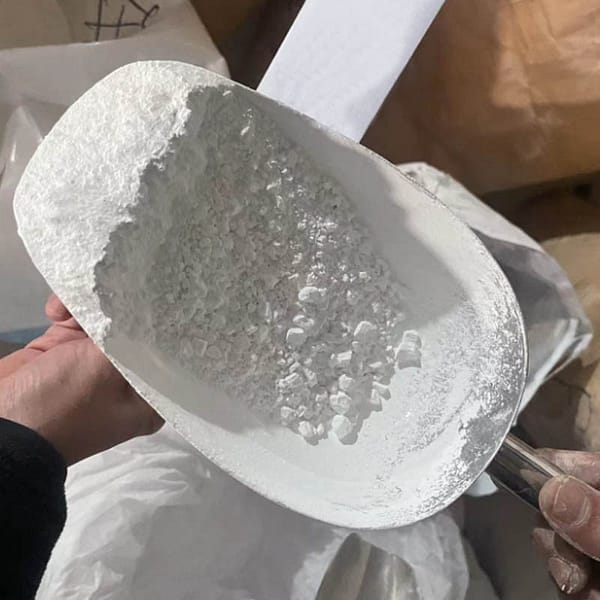Titanium dioxide (also known as TiO2, white titanium or Pigment White 6 – PW6)) is a major component in many industries. It’s especially prominent in rubber, paints plastics, and paper. This versatile compound is renowned for its stunning white pigment. It plays an important function in the transformation of raw materials into vibrant, finished products. Discover the many applications of titanium dioxide and its manufacturing methods. Learn about the effects it plays in a variety of industries.
The Canvas of Titanium Dioxide – A palette of Possibilities
Titanium dioxide plays an important function in the making of many everyday products. It enhances the functionality and design of these items. Pigment White 6 is used to create paints. It offers a vibrant and opaque white that improves the visual appeal of artistic and industrial processes.

In the plastics industry, titanium dioxide not only provides color, but also functions as a stabilizing UV agent that protects from the harmful effects caused by ultraviolet radiation. Because of its dual purpose it is an essential component of an array of plastic products ranging from sturdy outdoor products to packaging materials.
The Manufacturing Alchemy – Titanium Dioxide Production Processes
The process of producing titanium dioxide involves intricate processes that require a lot of expertise, with two methods in the forefront using sulfuric acid as well as the chlorination process. Each method has its own applications and complexities that contribute to the many applications titanium dioxide is used for across various industries.
The Sulfuric Acid Method: This procedure involves the reaction the ores that contain titanium with sulfuric acid, leading to the formation of a titanium sulfate-based solution. The solution is then hydrolyzed and produces hydrated titanium dioxide. The product that is produced, after it has been calcinated, becomes an extremely fine white powder ready to be used in many applications, especially in the paper and paint industries.
The Chlorination Method contrast, the method of chlorination utilizes chlorine gas to react with titanium-bearing ores to create titanium Tetrachloride. After a series if chemical reactions, titanium tetrachloride can be converted to pure titanium oxide. This technique is used to produce titanium dioxide in the rubber and plastics industries.
The Art and Science of Titanium Dioxide Applications
Titanium dioxide is the most popular ingredient in paints used across industries. Titanium dioxide is a sought-after choice among homeowners, artists and industrial customers alike because of its ability to produce brilliant white colors. The vibrant white hue it provides to canvas is not just an aesthetic one it is also practical. It increases the durability of painted surfaces.
Shaping Plastics with Radiance: In plastics, titanium dioxide serves a dual purpose. Apart from its role as a white colorant, titanium dioxide acts as a UV stabilizer, offering vital protection against the damaging effect of sunlight. This is why titanium dioxide is an integral ingredient in the manufacturing of outdoor plastic products and ensures that they retain their structural strength and aesthetic appeal through time.
Paper Whiteness and Opacity in the paper industry, titanium dioxide is responsible to the whiteness and opacity of paper products. It also increases the quality of paper and makes the printed images more vivid and more readable. The use of titanium dioxide in paper production is more than aesthetics. It plays a vital role in improving the overall quality of printed materials.
Rubber Resilience, UV Resistance – The industry of rubber is able to benefit from the UV-resistant properties of titanium dioxide. In rubber products, especially those that are exposed outdoors titanium dioxide serves as a protection against damaging effects of ultraviolet radiation, which ensures the durability and quality of products made of rubber.
Beyond Pigment The Invisible Impact of Titanium Dioxide
Titanium dioxide is a highly visible pigment. But its effect extends beyond its color. Because it can enhance the durability, resistance and long-lasting properties of all kinds of materials it is an insignificant but vital element in ensuring quality and function.
In conclusion it is clear that titanium dioxide is an important substance and seamless integration into the fabric of multiple industries. It’s also known as Pigment White 6 and it produces a stunning shine on canvasses that are both artistic and industrial. Its production is the result of two processes which are chlorineation and sulfuric acid. This creates a broad array of possibilities. Titanium dioxide is a great illustration of the harmonious blending between science and art that exists in manufacturing. It is used to enhance the appearance of paints, shield the plastic from UV radiation and increase the brightness of papers. The dazzling light of titanium dioxide reflects light onto the world and transforms a variety of products into products that are strong and brilliant.